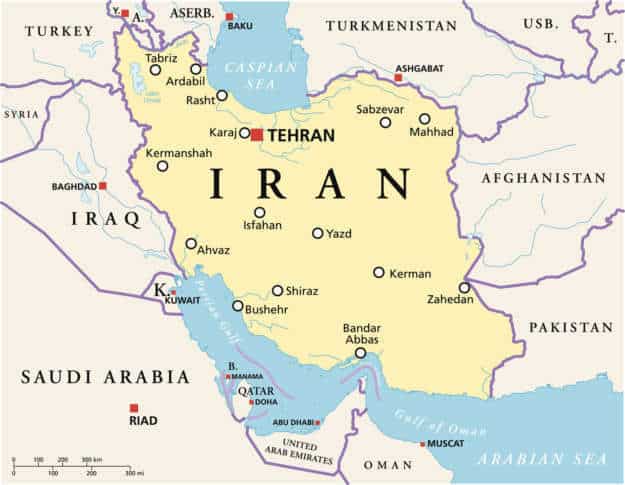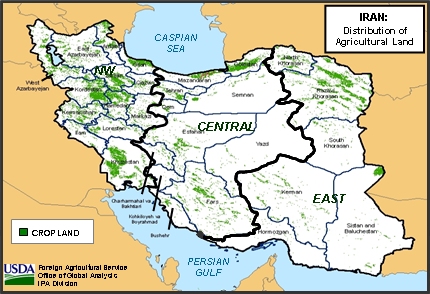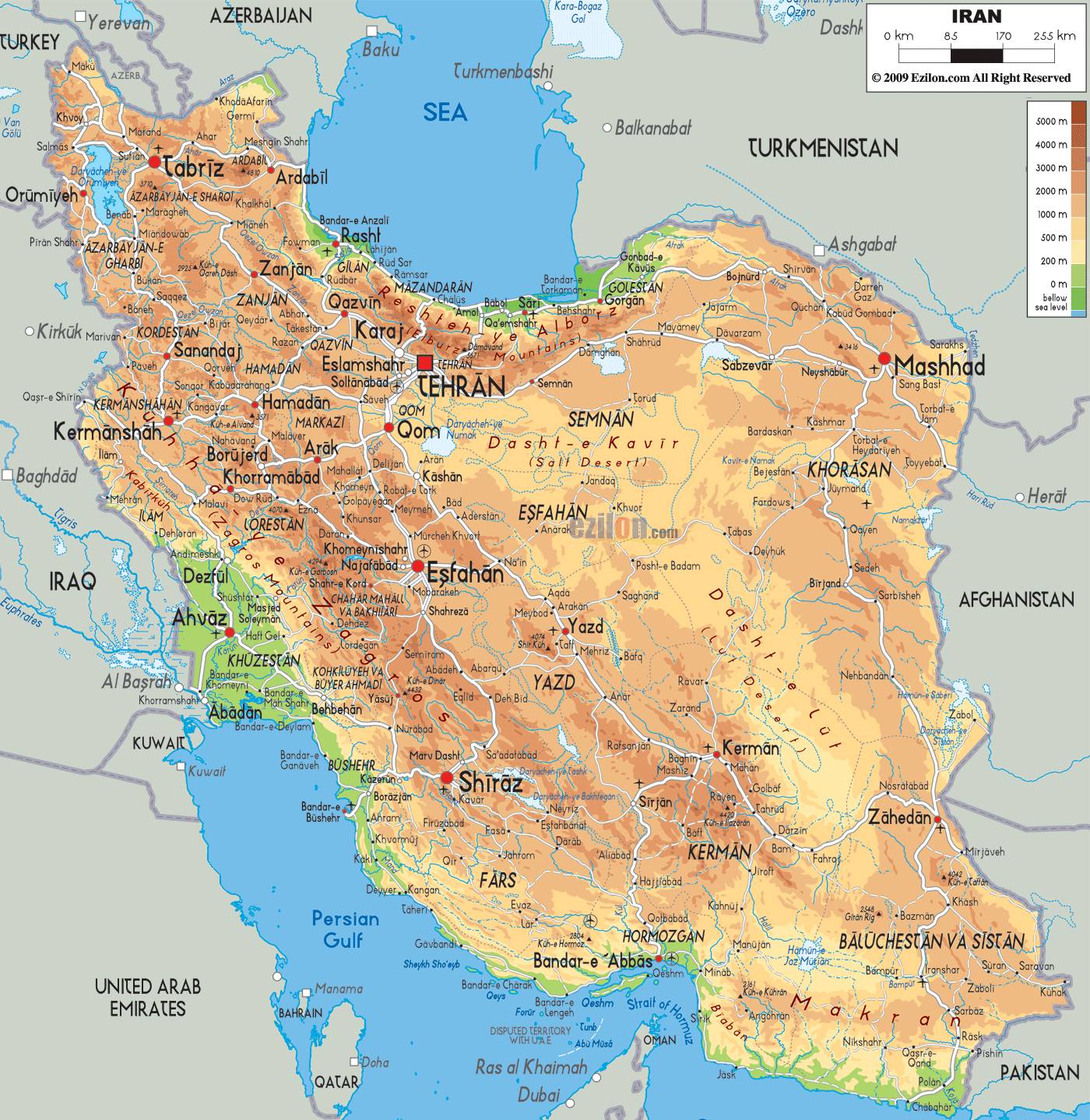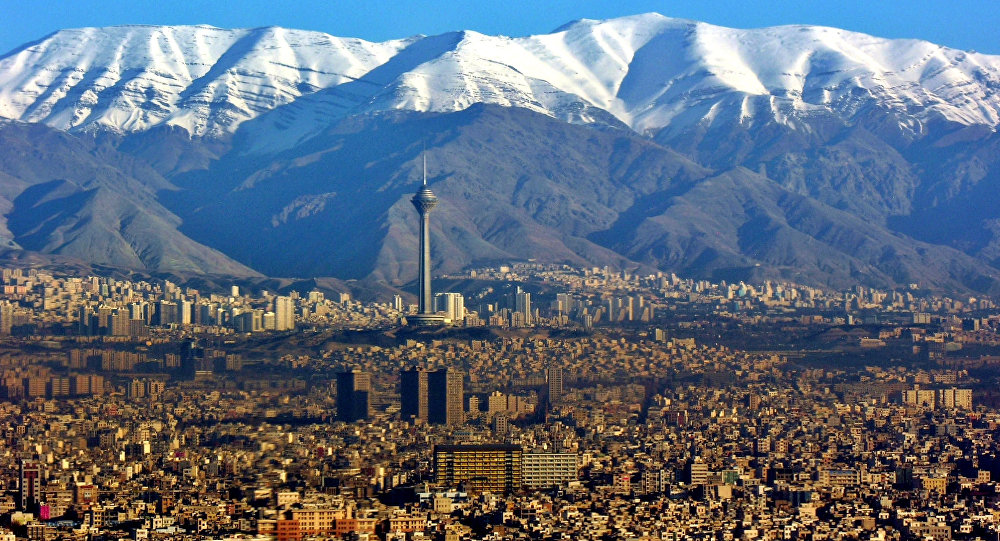We did a 'study tour' of the Islamic Republic of Iran from 4 - 22 April 2018.
This post describes our visit to Tehran, 4 - 7 April and then 22 April at the end of the tour.
The tour was organised by the Victorian Branch of the Australian Institute of International Affairs (AIIA).
Vera and my motivation in going to Iran was to see what all the fuss was about. Iran has been demonised by the Western media (particularly USA and Israel) and we wanted to make up our own minds. We were concerned about the security situation and decided that an organised tour would be the best option.
The tour leader was Patrick Moore who is the current President of the AIIA in Victoria; ably assisted by Amelia Ekkel, who is doing her Masters in International Relations and is an intern with the AIIA. Patrick was an excellent leader, with a firm but light touch and impressive cultural sensitivity (we took to calling him "Beloved Supreme Leader").
Other members of the group were (in alphabetical order):
Richard Broinowski (ex Australian Ambassador, author, lives Sydney)
Kristine Cant & Ross Stewart (Kris has an education background, Ross was a water specialist)
Rungrawee Chalermsripinyorat (PhD student at ANU)
Bethany Evans (Recent graduate, solicitor in legal firm)
Ruth & Hartmut Hofmann (Germans who lived in Australia since 1979; retired engineer & businessman)
Phillip Huntley & Jenny Osborne (Phil retired from Defence, Jenny teaching background)
David Lamb (retired manager Ford Motor Co)
Eve & Frank Mahlab (Eve and Frank both have extensive business backgrounds)
Vera & Alex Olah (retired public servant; taught English in China)
Jim Short (retired public servant and Federal politician)
Amelia (Millie) Young (Masters student in Sydney; widely travelled)
Our tour was arranged by Arista Seir Travel Co and a guide, Zahra Jafari, accompanied us throughout. She was a lovely young woman, very knowledgeable and friendly (inevitably, many of our impressions were formed through her eyes).
We had a big bus (owner/driver Hamid and his trusty assistant Wahid) which took us from Tehran to Shiraz; then we flew back to Tehran for one more night, before flying out to Dubai.
Itinerary: 4 April Tehran; 8/4 Kashan; 9/4 Isfahan; 12/4 Yazd; 14/4 Zeinodin; 15/4 Kerman; 17/4 Shiraz; 20/4 Tehran; 21/4 to Dubai. I will do a post on each location we visited.
A number of the group had some prior experience of Iran: Patrick led an AIIA tour in April 2017; Richard served in the Australian Embassy 1973-4; Kris had visited twice before; Jenny spent a year teaching English in Isfahan in 1975; Frank & Eve visited 40 years ago.
First some background on Iran itself.
Statistics on Iran (from CIA World Factbook, accessed March 2018)
Area
|
1.65 million square kilometres (19th largest country by
area)
Land 1.53; water 0.12 msk.
(Iran is a bit smaller than the Australian State of Queensland). |
Land use
|
Agricultural land 30%; forest 7%; other 63%
Agric land: arable 11%; permanent pastures 18%; permanent crops 1%
Irrigated land: 96,000 sq km
|
Environmental
|
Air & water pollution; desertification; deforestation;
overgrazing.
|
Population
|
82 million (July 2017 estimate) (17th largest population)
Persian 61%; Azeris 16%; Kurds 10%; Lurs 6%; etc
Population growth rate 1.24% pa
Adult obesity 26%
Urban population75% (27% in 1950); urbanisation rate 1.8% pa
Tehran: 8.5 million (Greater Tehran is 16m); Mashhad 3 million; Isfahan 2 million.
|
Life expectancy
|
74 years at birth (males 73, females 75)
|
Literacy
|
Adult literacy 87% (35% in 1975)
|
Religion
|
Muslim 99.4% (of which Shia 90%, Sunni 10%)
|
Political system
|
Theocratic (Islamic) republic
|
Unemployment
|
Overall 12.4%; Young (15-24) 26% (males 22%, female 43%
|
National Budget
|
Health 6.9%; Education 2.9%; Military 2.7%
|
GDP
|
PPP $1.6 trillion; Official Exchange rate $427m
GDP growth rate 2016 -1.6%; 2016 +12.5%; 2017 (est) +3.5%
GDP composition: Agric 10%; industry 36%; services 54%
|
Labour
|
Agriculture 16%; Industry 35%; Services 48%
|
Inflation rate
|
2016 9%; 2017 10.5%
|
Exchange rate
|
March 2018 US$1 = 32,700 rials
(When we changed US$ on 5 April we got US$1 = Rial 47,800)
|
In 1934 the Shah changed the country's official name from Persia to Iran - Zahra explained that "Iran" is more inclusive of the many minorities.
In January 1979, amidst increasing resentment and opposition, the Shah fled (to the USA); the following month Ayatollah Khomeini was welcomed back as a hero. His plans for an Islamic State had popular support - few realised that they were exchanging one form of dictatorship for another. In September 1980 Iraq invaded and the country unified behind the Mullahs to confront the external enemy. The long and bitter war finally ended in August 1988, now 30 years ago, but the scars are still visible.
Zahra explained that most people are hoping for gradual change - evolution - there is little appetite for revolution after all they had gone through in the last half-century.
559 BC
334 BC
200BC – 224AD
633 – 651AD
1219 – 1221
1501
1750
1794-1925
1804-13, 1826-28
1870-71 & 1920-1
1906
1925-6
1941
1951
1953
1979
1980
1989
2005
2013
|
Cyrus the Great ruled the Achaemenid Empire (extended from modern Bulgaria
to Pakistan, centered at Shiraz). Estimated to contain 50m people (40% of
the then-world’s population)
Alexander the Great defeated the last Achaemenid ruler, Darius 3rd.
Parthian Empire replaced the Sasanian Empire with capital at
Ctesiphon (near Baghdad). Many fights with Roman Empire.
Arab conquest of Iran; introduction of Islam.
Invasion by Mongols (Genghis Khan)
Safavid Empire (capital Tabriz), Ismail Shah changed from Sunni to
Shia
Karin Shah started the Zand Dynasty
Qajar Dynasty (capital Tehran)
Iran – Russian wars (Iran lost Dagestan, Georgia, Armenia, Azerbaijan)
Great famines, up to 25% died
First constitution and Parliament (constitutional monarchy)
Reza Shah established the Pahlavi Dynasty
Forced to abdicate by Britain, replaced by son Mohamad Reza Shah
PM Mohamad Mosaddegh nationalised oil industry
Anglo American coup backed by Mohamad Reza Shah
January Shah fled; February Khomenei returned; new constitution; November
students seized 52 American Embassy hostages, held for 444 days until Jan
1981; December referendum approved Theocratic State
“Cultural revolution” closed the universities
22 Sept Iraq invaded Iran, start of 8 year war (ended August 1988).
PM Rafsanjani; then Mousavi
PM Ahmadinejad elected, conservative
PM Hasan Rouhani elected, reformist?
|
Notes:
Iran was never colonised by Western countries; but they did influence events.
The main cities are located inland, not on the coast –
difficult to access.
Persians are Indo-European, not Semitic like Arabs and Jews.
Farsi language is unifying (although about 40% speak other languages at home)
The official language of the Moghul Empire in India was
Farsi, until English introduced in 1832.
Iran is six times the size of Great Britain, and a bit smaller than Queensland.
Poetry is very important in Iranian culture (Omar Khayyam; Saadi;
Hafiz; etc)
Here are some maps of Iran.
 |
| Iran is a relatively large country; it follows Shia Islam in a sea of Sunni. |
 |
| This map shows the cities we visited in Central Iran: Tehran - Kashan (half-way between Tehran and Isfahan) - Isfahan - Yazd - Kerman - and Shiraz. |
 |
| This map shows the rough topography: mainly mountains and deserts. A difficult environment which bred tough people. |
 |
| This map from the US Department of Agriculture shows the distribution of agricultural land - mainly in the North-West and along the Caspian Sea - not much at all in Central or East Iran. |
 |
| This map shows the distribution of language groups / minorities in Iran. |
As this was promoted as a "Study Tour" we started with a series of meetings/briefings in Tehran. We met with the following organisations:
Australian Embassy
International Committee of the Red Cross (ICRC)
Operation Mercy and Australian aid
Sharif University re Lake Urmia
Institute of Political and International Studies (IPIS) who sponsored our visit.
Faculty of Law & Political Science of the University of Tehran
Ravand Institute
I won't go into details of the meetings - the AIIA will publish a full report on the visit which will be available on their website - suffice to say that these meetings gave us a reasonable introduction to some of the contemporary issues facing Iran.
The longer we spent in Iran the more we realised that we were only scratching the surface - it is a complex country and society.
Here are some photos of our stay in Tehran.
 |
| A banner in the foyer of the Australian Embassy commemorated 50 years of diplomatic relations (1968 - 2018). |
 |
| Briefing at Sharif University by Prof Hossein Shabaz on the project to save Lake Urmia. |
 |
| The Ambassador and his wife invited the group for dinner at their residence, together with a number of local guests. A very pleasant evening in lovely surroundings. |
 |
| The amazing Hall of Mirrors, the centerpiece of the Golestan Palace (shades of Versailles?). |
 |
| One of the grand rooms leading up to the Hall of Mirrors. Seemed to reflect a strong European influence in design. |
 |
| A series of 'placards' featuring passages from the Koran, the Holy Book of Islam. |
 |
| This public toilet had an unusually attractive mosaic facade. Large images of the first and current Supreme Leaders were everywhere. |
 |
| Another poster on the street in praise of the current Supreme Leader, Imam Ali Khamenei. |
 |
| There were many photos, in all the cities we visited, commemorating men and women who died during the 8 year war against Iraq (1980 - 88). They are revered as Martyrs. |
 |
| We visited the impressive National Museum of Iran. Here Zahra is describing the geography of Iran. The Museum was well-designed, minimalist, and contained some very fine pieces. |
 |
| This map shows the extent of the Achaemenid Empire under Cyrus the Great 2,500 years ago. It extended from modern-day Bulgaria and Egypt to Pakistan. Impressive history. |
 |
| One ff the interesting modern sculptures in the grounds of the Green Palace. |
 |
| Traffic jams were frequent in Tehran, lots of cars on the roads, mostly French marques (Peugeot & Renault) , all manual transmission, mainly sedans, and mainly white. |
 |
| There seemed to be relatively few restaurants and cafes at least in the area around our hotel. But we came across this pastry shop which was well patronised. |
 |
| Some of the pastries on offer in the Danish Pastry shop near our hotel. |
 |
| There must be large supermarkets but we mainly saw smaller convenience stores such as this one near our hotel in Tehran. Shops stay open late, until 9 or 10pm. |
 |
| A shop selling Iranian handicrafts. |
 |
| Some of the anti-American (and anti-Israel) posters in the grounds of the Museum. |
 |
| We visited the huge and impressive Museum commemorating the Iran - Iraq War (1980-88). |
 |
| Richard and Millie sitting on a bench in the grounds of the War Museum (the seats were shaped like tanks). |
 |
| A display of tanks used in the Iran-Iraq War (1980-88). |
We heard that the financial sector is in a precarious state (ie several banks are insolvent or close to insolvency), but didn't have time to get more details.
...
Our time in Tehran was a good introduction to this fascinating, intriguing, country.
Lovely people, pity about the government....
My next post will be about our next stop, Kashan. This post is long - I promise that the others will be shorter!
...
Best wishes, stay healthy and keep smiling.
Alex Olah & Vera Olah
Canberra, Australia
Saturday 12 May 2018.















